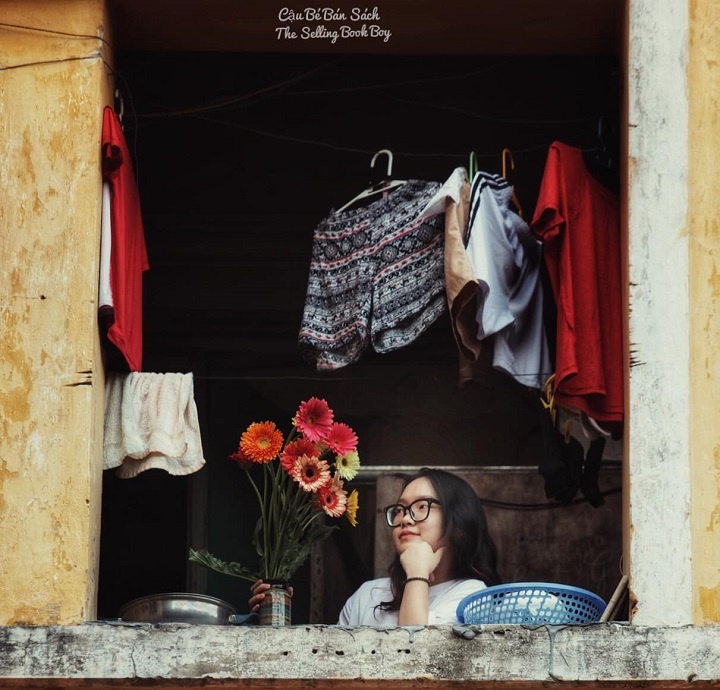Apart from Turtle Tower, Hoan Kiem Lake, or One Pillar Pagoda – the eternal symbols of Hanoi, old yellow-painted apartment buildings with caged balconies characterize the post-war Hanoi. They are a part to the landscape of the capital both yesterday and today.
| The old apartment building inside Hanoi University in Thanh Xuan district., Hanoi. Photo: Dinh Quyen. |
Built in the 1960s-1980s in the four central districts of Hanoi, old apartment buildings, usually with five storeys, remarked the first stage of the construction of the new socialist country, becoming not only a witness of history and architecture of a period but also a symbol of neighborhood and community culture and life.
As those buildings were firstly given to state cadres, residents here were not only neighbors but also co-workers and even friends.
Many generations have lived in those buildings and everyone knows each other as well as each other’s family members. In addition, as they share several parts in the building such as the gate, the balcony, the hall, the playground, the garden, among others, their relationship is close.
| The Kim Lien old apartment building in Dong Da district., Hanoi. Photo: Nguyen Anh Tuan. |
To many people born during the 1960-1980s, these buildings reminisce their childhood. It was where they chased and played games with other kids next door along the hall and the playground every day. When they grew up, the narrow stair could be a romantic dating place at night.
To women, it was unforgettable days washing dishes and clothes under the public tap with others, drying them on the balcony, or preparing a big pot to together cook banh chung (traditional rice cake) in the public space in front of the building on the occasion of Tet (Lunar New Year Festival).
There they were both doing their work, talking about their day, work, children, price at local markets, or sharing a new cooking recipe or the experience of making iron caged-balcony in the back of the apartment to expand the small space or breeding pigs at home as almost everyone did at that time.
| Old apartment buildings are a special part in the life of many people. Photo: Dinh Quyen |
Meanwhile, the garden was the favorite place of the elders where they looked after their vegetables and bonsai or had some tea in the afternoon with neighbors.
Particular, the notice board was an important part of their life. Every time when it informed some news, activities and parties in the holidays and festival seasons, all the residents were eager to talk about it and participate in it. In the age without internet and high-end technology, it was the “delicious spiritual food” for them.
Moreover, it also helped tighten the relationship among family members and neighbors. It is very different today in new modern buildings where neighbors do not usually know much about and even barelymeet.
| A bodyguard of Thanh Xuan old building apartment. Photo: Dinh Quyen |
Old apartment buildings are a special part in the life of many people, including writers, poets and painters who have brought them into their works with a lot of memories, feelings and love.
These buildings and the residents together passed through the tough time of the war, the post-war penury as well as a lot of changes from the period of economic subsidy to the renovation and the development today.
In the current rapid urbanization of Hanoi, there are plenty of new resident areas providing better living conditions so that many people have moved in and out from these old apartment buildings.
| Photo: Dinh Quyen |
The residents and the neighbors of the same place, however, behave differently among themselves now and the new rhythm of modern life also changes the relationships among them.
Nonetheless, some typical lifestyle of the place still remains. If you visit one of them in areas such as Giang Vo, Thanh Cong, Nguyen Cong Tru, Kim Lien, Trung Tu, Van Chuong, Thuy Loi, among others you can catch some kids sliding on old stairs, lines of clothes hanging on the balcony, plant and flower pots appearing behind bars of iron cages or elders playing chess in the public ground, to explore another part of Hanoi which is full of interesting surprises hidden in its small and modest appearance.



.jpg)

.jpg)
.jpg)


